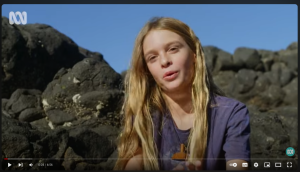Media
CoralWatch in the news
2024
March 6, Canberra Times, New images reveal extent of coral bleaching
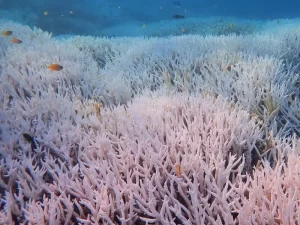
Scientists have warned swathes of the Great Barrier Reef have suffered coral bleaching, with new images showing the extent of the damage.
March 6, The Advocate, New images reveal extent of coral bleaching
March 6, Win news Wide Bay, Winnews Wide Bay, Great Barrier Reef on High Alert
The Great Barrier Reef is on high alert, with scientists predicting another mass coral
bleaching event is likely in the coming weeks.
NOS youth journal. Elijah Richardson and CoralWatch featured
https://www.facebook.com/100027534051603/videos/447545061033570
April - Warrior for wildlife, Breannah Mitchell, CoralWatch Ambassador featured
https://alivemag.blog/2024/02/06/warrior-for-
wildlife/
April 9, UQ news online, Interactive map aims to chart global coral health
A University of Queensland-led citizen science project, CoralWatch, has unveiled an interactive online tool designed to help researchers and citizens alike track and manage coral health worldwide.
2023
Elijah continues to share passion for ocean
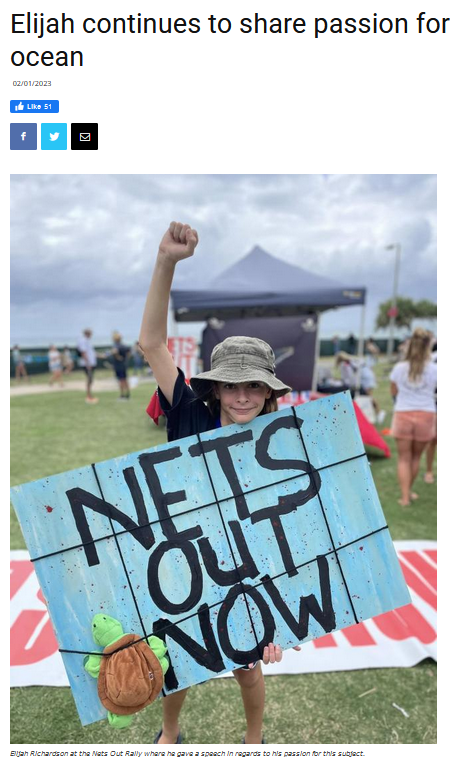
CoralWatch Ambassador Elijah Richardson, with the support of his family, has continued to both locally and throughout the state share his passion for looking after the environment, in particular the Great Barrier Reef and ocean life.
Complete article
7 February, UQ Online News: Citizen scientist make ‘surprising’ coral find, Unidive
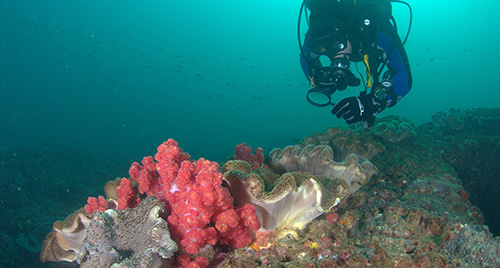
Image: Associate Professor Chris Roelfsema
A University of Queensland study has found greater-than-expected coral cover in waters off Queensland’s Sunshine Coast.Over the past two years, more than 50 volunteer divers from UQ’s Dive Club (UniDive) ran a citizen science project to assess the health of reefs off Mooloolaba.
Read the full story
April 5 2023, Cosmos, Inside the most idyllic research station on Earth – and you can visit
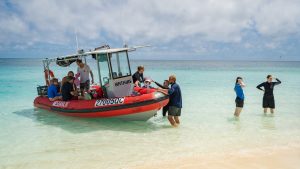
As I leap into the warm, subtropical waters off Heron Island, on the southern Great Barrier Reef, I’m instantly immersed in a visual riot of triggerfish, fusiliers, coral trout and sea perch, swimming against a colourful backdrop of coral.
Turning to spot a couple of endangered green turtles grazing on iridescent jellyfish, I figure it’s easy to see why underwater explorer Jacques Cousteau rated Heron Bommie among his top 10 dive sites.
A tiny speck in the Coral Sea located 80 kilometres off the coast of Gladstone, this 16.8-hectare coral cay surrounded by a lagoon and healthy fringing reef is a seasonal resting spot for hundreds of thousands of migratory seabirds, as well as maternity ward for nesting turtles.
read full article
24 April 2023, UQ Online, Youngest CoralWatch Ambassador makes a mark
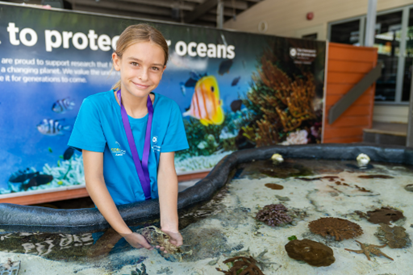 Elijah Richardson might be just 10 years old but already he is a force to be reckoned with. His passion for the ocean and for saving the environment has led him to cities and towns across Queensland as a CoralWatch Ambassador.
Elijah Richardson might be just 10 years old but already he is a force to be reckoned with. His passion for the ocean and for saving the environment has led him to cities and towns across Queensland as a CoralWatch Ambassador.
Two years ago, Elijah convinced singer-songwriter Billie Eilish to let her song Ocean Eyes be used in a CoralWatch campaign to raise awareness about reef conservation. These days, the Aussie schoolboy regularly gives presentations, rallies his peers and the public, and leads efforts like reef walks and beach clean-ups.
Most recently, Elijah was with CoralWatch at UQ’s Alumni Weekend on Heron Island and at World Science Festival in Brisbane – as always, encouraging others, young and old, to join him in protecting precious reefs.
Established in 2002, CoralWatch is a citizen science program based at The University of Queensland. Ambassadors and volunteers work to monitor and protect the health of coral reefs around the world through education and outreach.
Learn more about CoralWatch or attend a CoralWatch event.
Every day, climate change and environmental pressures take a toll on irreplaceable coral ecosystems like The Great Barrier Reef, one of just seven Natural Wonders of the World.
Make a difference for our world and for future generations by supporting CoralWatch.
May 2023 ‘War on Waste’, interviewed Elijah Richardson as Young Waste Warrior, ‘Kids like this give us hope for the future’
27 Sept 2023, UQ Online, International collaboration to help predict future coral bleaching events
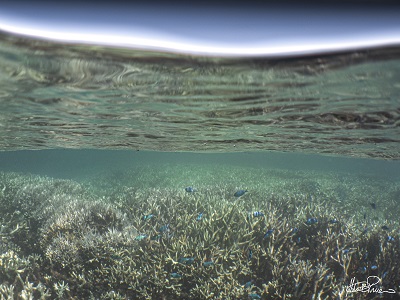
A collaborative project led by The University of Queensland’s citizen science program CoralWatch is aiming to get more people collecting valuable coral health data around the world.
2022
UQ News 9 June 2022 - 20 years of citizen science backs up findings on coral bleaching
9 June 2022
The University of Queensland – Research
20 years of citizen science backs up findings on coral bleaching
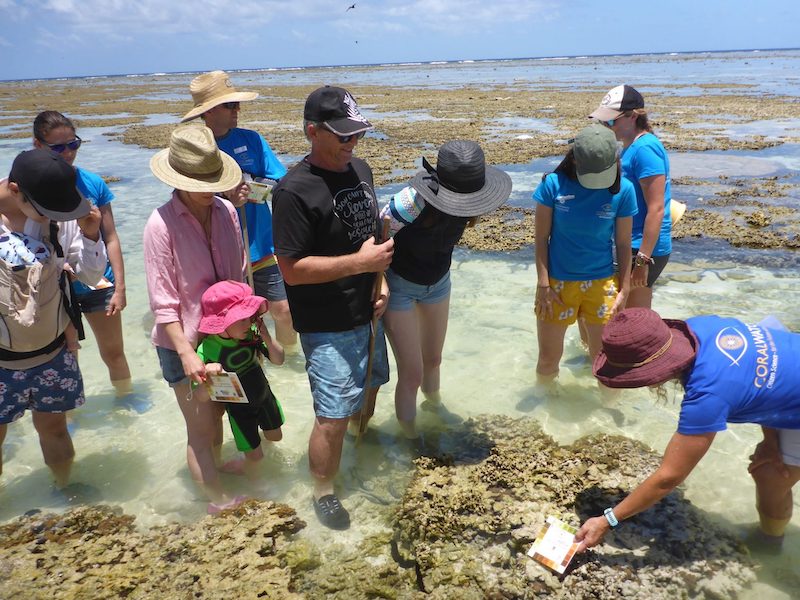
Volunteer-collected data on coral bleaching has been credited with supporting scientific findings about reef health across the globe. Not-for-profit organisation CoralWatch, based at The University of Queensland, is celebrating its 20th year of world-leading citizen science. CoralWatch founder and UQ Queensland Brain Institute neuroscientist Professor Justin Marshall said volunteers have been able to cover places scientists can’t get to, including reef systems from Indonesia to Mexico. “CoralWatch now has more than 8000 members in 137 countries – all engaged in monitoring and protecting coral reefs,” said Professor Marshall. “We’ve conducted almost 15,000 surveys on around 2100 reefs so far, and as the world becomes focused on climate change and its damaging effects on our environment, the interest is growing.”
Complete article
Queensland boy who got Billie Eilish to help reef program made CoralWatch ambassador
ABC News
Queensland boy who got Billie Eilish to help reef program made CoralWatch ambassador.
A nine-year-old Queensland boy who encouraged one of the world’s biggest pop stars to get involved in a campaign to protect the Great Barrier Reef has added another achievement to his impressive record.

Late last year, Bundaberg’s Elijah Richardson, who has been a long-time supporter of not-for-profit citizen science program CoralWatch, pulled off an almost unimaginable feat when American singer-songwriter Billie Eilish agreed to lend her 2016 hit single Ocean Eyes to the cause.
Last month, the Year 4 student was made a 2022 ambassador of Coral Watch, the first time a child has taken on the position.
Complete article
Elijah takes on CoralWatch role to help the environment
Bundaberg now
Elijah takes on CoralWatch role to help the environment
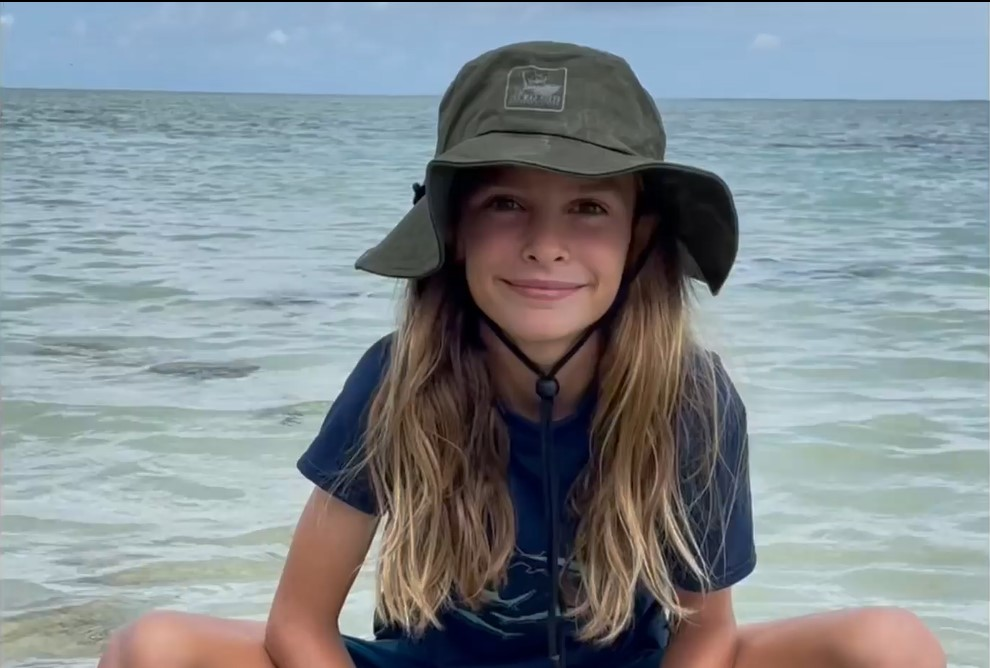
Passion for the natural world is entrenched within nine-year-old Bundaberg boy Elijah Richardson who has been named a 2022 ambassador of CoralWatch.
It is the first time CoralWatch has given a position to a child, and Elijah is very honoured to play his part to help protect the environment.
Elijah said becoming a Coral Watch ambassador allowed him the opportunity to spread the message even further, and he was excited to attend Brisbane’s World Science Festival in March speaking to the public about the Great Barrier Reef on behalf of CoralWatch.
Complete article
2021
Aussie schoolboy Elijah Richardson, eight, reveals how he enlisted singer Billie Eilish to help save the Great Barrier Reef
Daily Mail
A young environmentalist has enlisted none other than pop star Billie Eilish to help save the Great Barrier Reef. Aussie schoolboy Elijah Richardson, eight, has been campaigning since 2020 for CoralWatch – a non-profit organisation that’s dedicated to reef conservation. Appearing on Weekend Today on Sunday, Elijah revealed how he reached out to the singer, 19, ‘about a year ago’.

About a year ago I messaged Billie Eilish to use her music to try and get more people involved in saving the Great Barrier Reef,’ Elijah told hosts Richard Wilkins and Jayne Azzopardi. ‘Somehow it got to her eventually and she said yes,’ he continued.
Complete article
Renowned citizen science program CoralWatch launched their new database using the ALA's Biocollect field data collection platform
Atlas of Living Australia
CoralWatch is a not-for-profit organisation based at The University of Queensland. It is a globally significant citizen science program that started in 2002. It aims to involve anyone (divers, students, scientists and tourists) in monitoring coral colour to help us understand more about coral health and bleaching events. CoralWatch creates simple and engaging tools to help citizen scientists monitor global coral health and raises awareness of our reefs via education and public outreach programs.
Complete article
Citizen Scientists Inspired by Reef Experience
Reef Ecologic
Recently Reef Ecologic hosted a group of enthusiastic citizen scientists at Orpheus Island Research Station in the central region of the Great Barrier Reef. The Reef Ecologic Citizen Science and Reef Leadership Workshop was an amazing experience made all the more special by the fact that we were delayed by a couple of weeks due to the recent cyclone threat. The rescheduled event was held amidst amazing weather, sometimes stormy skies, flat calm seas and spectacular underwater visibility.
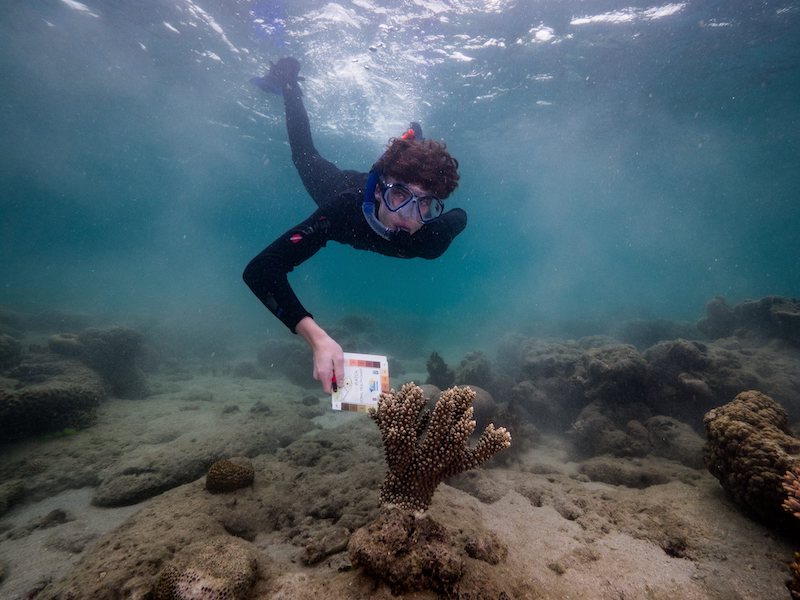
At each location participants completed Reef Check Australia surveys, CoralWatch surveys, and Great Barrier Reef Marine Park Authority Eye on the reef surveys. Each survey method has a different objective but all of them contribute valuable information on the health of coral reefs. A survey today gives us a snapshot of that reef and over time, repeated surveys enable us to see trends and changes and this information can help support management of the Reef.
Complete article
CoralWatch - For tourists visiting the Great Barrier Reef
Barrier Reef Australia
Led by the University of Queensland, CoralWatch is a citizen science initiative to help non-scientist volunteers collect valuable data about the health of their local reefs. The data can help alert reef management groups of potential coral bleaching events. To get involved, you can record the health of corals when out snorkelling or diving the Great Barrier Reef using their simple chart and send this data back to CoralWatch using their free app.
See website
Researching Coral Health – What is CoralWatch?
Ocean mimic
Love coral reefs and the ocean? Want to get involved in protecting them? Interested in citizen science and coral health? Then read on to learn about CoralWatch and how easy it is for you to help out…
Complete article
2020
The Project - Meet Elijah
15 November 2020
The Project
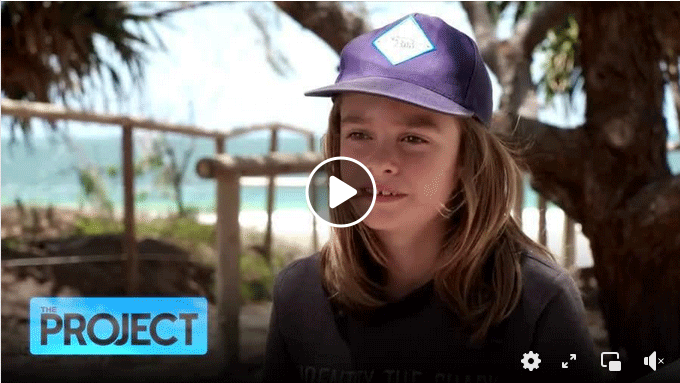
Meet Elijah, the amazing 7-year-old Queensland eco warrior who devotes all his spare time to saving the great barrier reef.
Watch video
BRIGHTEN UP: Upbeat news from around the region
Newsmail
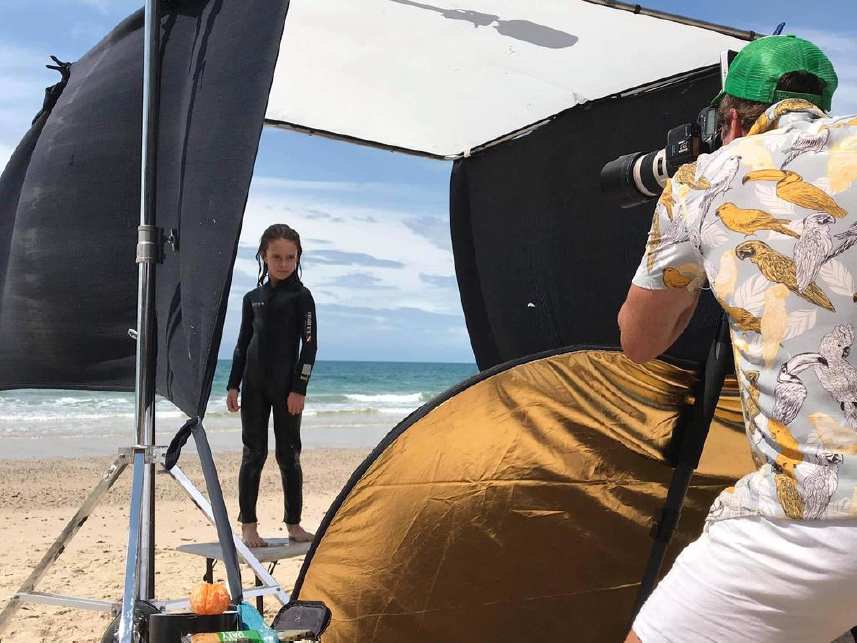
BUNDABERG is full of positive news and that is something to celebrate, which is why we are bringing you a weekly dose of good news stories from around the region. Here are just some of the things that happened this week that made us smile.
Bundy locals enlist help from celebs to protect reef What does musician Billie Eilish and actors Robert De Niro and Kit Harrington have in common? They have all been enlisted to join the crusade to save the Great Barrier Reef. Delivered by The University of Queensland, CoralWatch is an international reef citizen science program which will be used to collect data, monitor the reef and reduce carbon emissions and the impact of global warming. Find out how you can help by contacting CoralWatch.
See article
Bundy locals enlist help from celebs to protect reef
Newsmail
FILMING for a reef protection campaign recently took place in the Bundaberg region, with calls for support from a Hollywood legend, popular musician and Game of Thrones star. Delivered by The University of Queensland, CoralWatch is an international reef citizen science program which will be used to collect data, monitor the reef and reduce carbon emissions and the impact of global warming.
COMMUNITY ACTION: A group of Bundaberg residents took part in the Come Join Our Watch campaign, delivered by CoralWatch and The University of Queensland. Bundaberg CoralWatch ambassadors Natalie Lobartolo, Rebecca Coulombe and Jess Firth helped in the recruitment of local volunteers, who appeared in a campaign video, which was shot on Lady Musgrave Island and Coonarr beach. “At the beginning of June when COVID-19 restrictions eased, I went to Lady Musgrave again and the reef looked amazing,” Ms Lobartolo said. “Many corals went from bleaching to recovery – they have regained their zooxanthellae (symbiotic algae) and are looking beautiful.” But it hasn’t been all smooth sailing this year, after the Great Barrier Reef experienced a mass bleaching event, making it the third in just five years. Sadly reefs surrounding Lady Musgrave and Lady Elliot Islands were impacted by this severe bleaching and while they have bounced back, the damage serves as a reminder of the importance of reef conservation.
See article
Reefstory Tellers: CoralWatch
Great Barrier Reef Foundation Blog/i>
We partnered with Coral Watch to capture this short video that highlights their impact on the health of the Reef as part of our Reef Storytellers series.
Meet the CoralWatch team that’s training community members to become citizen scientists. The Great Barrier Reef is the largest living thing on Earth, with corals spanning an area visible from space. However, its size makes it hard to see how a growing combination of threats is affecting our Reef’s health. Researchers can’t be everywhere at once, which is why we’re supporting the training of more citizen scientists to collect vital information on the health of their local reefs. Everyone from local teachers to Indigenous students are taught how to collect information using CoralWatch colour charts. Corals turn certain colours when they are stressed so this is a quick and easy way to see and report on how healthy they are. The information collected on their local area is used to make decisions such as where to focus restoration and recovery efforts. Saving our Reef is a huge task but there’s hope. Our citizen science projects are already making a real impact, but there’s more to be done. This is one of the Foundation’s 25 citizen science and local action projects being delivered right now and already making a positive impact on the health of the Reef. Funded by the Great Barrier Reef Foundation’s partnership with the Australian Government’s Reef Trust.
See article
Bundy Boy's Star Reef Plea
Bundaberg today
A seven-year-old boy from Bundaberg is set to be the face of a bold new social media campaign calling on Hollywood heavyweights to ‘come watch out for our reef’. Local boy Elijah Richardson will feature in a new multi-media campaign for CoralWatch that has been developed by some of Australia’s most respected advertising professionals. The social media campaign is an audacious quest to attract three global superstars to add their famous faces to the local faces of the CoralWatch volunteers to get more people watching out for the reef. Hollywood legend Robert de Niro, teenage music icon Billie Eilish and Game of Thrones star Kit Harrington are specifically being targeted for their support. “We realise that securing the support of even one of these megastars is a long shot, but why not, the Great Barrier Reef is worth it”, says Monique Grol from CoralWatch. The campaign is being shared online now at the CoralWatch facebook page. CoralWatch is calling on everybody who cares about the reef to “Come join our watch!’
See article
What you can do to help keep the Great Barrier Reef great
Escape
Find out how to make a trip to the Great Barrier Reef just as good for the Reef as it is for you.
DO YOUR RESEARCH BEFORE YOU GO If you can see it from space, it’s probably worth getting to know this whopping great environment before dipping in your toe. Knowing exactly what you’re preserving is one of the simplest ways to understand why protecting and conserving the Reef is so important. The Great Barrier Reef Marine Park Authority (GBRMPA) is a great place to start. Also check out Citizens of the Great Barrier Reef – a social movement designed to unite people from around the world to learn and care about the reef.
BE A CITIZEN SCIENTIST There are several citizen science projects that you can contribute to. Sign up for ReefSearch and you’ll be sent a field guide to show you how to contribute valuable data to scientists studying the Reef’s health. Spend 10 minutes of each dive, snorkel or reef walk looking for key species, checking coral condition, and making note of any rubbish found. Coral Watch is focused on bleaching events, managed by the University of Queensland. Your Coral Watch kit comes with a colour-coded slate that helps you identify and record coral colours. You can then upload via an app to add to a global database. Eye on the Reef is managed by the Great Barrier Reef Marine Park Authority (GRMPA). Download the Eye on the Reef app or log in online to report your sightings directly to them. A sighting can be anything a Reef user feels important enough to report and can include incidents like a bleaching event, crown-of-thorns starfish, stranded or sick wildlife and coral damage.
See article
Conservation activists urge post-pandemic tourism reset in Thailand
Nikkei Asian Review
KOH PHANGAN, Thailand — It is 9 a.m. on a sultry Sunday morning off the coast of Koh Phangan, a popular tourist island in the Gulf of Thailand. More than 30 divers are getting ready to plunge into the tropical waters — not to marvel at the underwater world but to spend the day removing kilometers of abandoned fishing nets that lie on the ocean floor, snagged on rocks and coral and suffocating marine life.
These weekly diving trips are organized by Sitthiroj Kaenongsamed, a local diver and environmental activist. “The first time just three of us retrieved 700 kg of nets,” says Sitthiroj. “We realized that there are a lot of nets down there and we keep finding new ones.”
See article
Mapping citizen science in Australia
Australian National University
As a rapidly growing field, citizen science which involves non-experts in active scientific research, is attracting much interest from scientist, governments and publics, worldwide. In Australia alone, hundreds of citizen science projects exist with over 100,000 participants contributing to scientific data collection, classification and analysis. This research aims to map and characterise citizen science in Australia, determine its diverse goals and practices, and design ways for benefiting all citizen science stakeholders. This research will inform citizen science theory and practice, promote the understanding of citizen science potential to enhance science communication and increase public engagement with science, and contribute to design and assessment strategies geared towards optimal and diverse citizen science outcomes. Initial results from this research highlight the unique characteristics of Australian citizen science and illustrate its wide scope, practices and community orientation. The research was covered by Inspiring Australia.
Read the participant report here. CoralWatch participated in the surveys.
Reversing Coral Bleaching
Climate Foundation
There have been f ive mass extinctions on the planet earth. Each extinction has been preceded by the death of the coral reef. In the last 15 years, 30% of the world’s coral reefs have perished and another 6% are expected to die in the next two years. Scientists are predicting that the Great Barrier Reef will become a geological relic in 27 years. In 1998 there was a massive global coral bleaching event. In 2010 there was another one. Because of global warming, massive global coral bleaching events will happen with increasing frequency and with far-reaching results. Bleaching of this magnitude has not occurred for hundreds, if not thousands, of years. We will continue to lose thousands of square kilometers of coral reef; Unless, of course, we do something about it.
What We Did: There are very few tools available for Coral Reef managers for counteracting mass coral bleaching, primarily caused by elevated seawater temperatures. Climate Foundation developed a f ield-based cooling system for reef water to give Coral Reef managers the possibility to act on bleaching warnings to preserve high-value reefs in the face of climate threats. We asked ourselves, can we reverse coral bleaching in the f ield on a small scale? Can we scale it? Can we provide reef managers with new tools to protect high-value reefs against climate change?
In 2011- 2012, in partnership with Univ. Hawaii, Hawaiian Institute of Marine Biology (HIMB), Climate Foundation explored how to cool off the reef on a bigger scale with solar arrays, a generator, a marine pump and a thermo-electric cooling system. Experimental setup: In order to test methods of reversing coral bleaching Climate Foundation selected an area where it is possible to estimate precisely the beginning and the end of an annual coral bleaching process. T he Tutuila airport reef was chosen as a perfect exploration ground since it offers all relevant site selection criteria. It was near to shore, it was near a power source, the coral bleached annually and Doug Finner had systematically logged the temperature and bleaching for years. Methodology: Photos of coral were calibrated using a CoralWatch coral-health chart to measure color intensity. On this scale, low values of 1-2 correspond to pale, bleached color, while higher values of 3-5 correspond to more intense color ( less bleached). Temperature loggers and illumination data loggers recorded temperature to 0.1°C. Recordings were made for up to two weeks after treatment to observe the prolonged biological response to treatment. Experiment results: Color intensity increased 3 to 4 units at test sites in one day on the CoralWatch scale with no increase at reference sites. Color intensity held for over a week before declining by 1 unit a week after cooling stopped. Other reference sites remained bleached. In under 12 hours, the color returned to the coral! T he bleaching had stopped.
Read full article
Virtual Tours-Amazing Online Experiences For Kids
Sassy Mamma
Travel is a luxury that we’ve been able to share readily with our kids and there’s no denying that we’ve raised little global citizens in Hong Kong. Unfortunately, exotic holidays aren’t on the agenda for the coming months and you and your children could be forgiven for getting itchy feet. The world’s zoos, aquariums, museums and galleries might be closed to the public, but many have opened up virtually instead, unveiling a treasure trove of resources. Be sure to check out these virtual tours with your little ones and get some inspiration for your next trip while you’re at it!
CoralWatch, Australia While this one isn’t a tour as such, it is such a valuable resource we couldn’t not include it! CoralWatch is a citizen science programme based out of the University of Queensland. You can download free learning materials from the website or watch educational videos on its YouTube channel. Follow it on Facebook and Twitter to teach your little conservationists about the fascinating coral reef ecosystems.
See article
Students get real with marine science in school workbooks
AIMS
Queensland’s marine science students are now accessing the latest in long-term monitoring information on the health of the Great Barrier Reef. The Australian Institute of Marine Science’s (AIMS) long-term monitoring graphs have been included in a student workbook, giving Year 12 students accurate information to interpret, with reference to regional trends, how coral cover has changed on reefs over time. AIMS’ Long Term Monitoring Program leader Dr Mike Emslie said the Institute’s researchers had explored marine life in the World Heritage Area for nearly 50 years, and held 37 years of ongoing annual monitoring data, detailing the Reef’s health. “It is great to see students getting access to the actual data which our experts collect and analyse, and which reefs managers use to understand what is happening in the marine park,” Dr Emslie said. Marine science teacher and author of the 160-page Year 12 Marine Science student workbook, Gail Riches, said the graphs demonstrated the value of actual data to interpret trends and identify changes to the reef over time.
Read more
Coral Bleaching in the Great Barrier Reef
Queensland Brain Institute Podcast
This episode the grey matter in question is not, in fact, the brain, but the bleached corals of the Great Barrier Reef. Professor Justin Marshall leads the Sensory Neurobiology laboratory at the Queensland Brain Institute. He talks about working with Sir David Attenborough, the citizen science project Coral Watch, and the unprecedented coral bleaching that is unfolding on the Great Barrier Reef.
Kirsten: Hi, I’m Kirsten MacGregor and you’re listening to ‘A Grey Matter’. The neuroscience podcast from the Queensland Brain Institute. This week, “The Grey Matter” in question is not in fact the brain but the bleached corals of the Great Barrier Reef. Professor Justin Marshall heads up the sensory neurobiology lab at QBI. His life’s work is centered on the reef, in all its glory and how the creatures that live this see their world. He researches the visual systems of reef, sh and Mantis shrimp and their applications for humans. For example, Mantis shrimp eyes are inspiring the design of new cameras which can detect cancers using polarized light. Professor Marshall’s team also established the citizen’s science project “coral watch”, which has nonscientists around the world reporting on the health of corals using a specially designed color chart. Recently, Justin was Chief Coordinating Scientist on Sir David Attenborough’s “Great Barrier Reef” series, which will screen on A.B.C. TV this year. Earlier this month, he made predictions of coral bleaching. Justin made what he hoped would be a regular research dive a Lizard Island, of the Far North Queensland coast, instead what he found horri ed him. The coral bleaching was like none he’d seen before and aerial vision has since con rmed the extent of the damage. Justin’s photos and videos from the trip have now been seen across the world. For Justin, this is both a deeply personal affront and a global concern.
Read complete podcast
New coral research program
Gladstone Observer
Students will have more materials to learn about the local marine environment with the launch of Capricorn Coast Corals at your Doorstep. The education package is part of CoralWatch, a not for profit citizens science program which promotes everyday actions to improve coastal marine environments.
CoralWatch ambassador Dr David Kopelke said it would provide people the opportunity to participate in local environmental education activities and focused on Port Curtis and Keppel Bay. “While Port Curtis is known for its mangroves and seagrass beds, not many are aware of the rich coral communities also present,” Dr Kopelke said. The program integrates global monitoring of coral bleaching with education about coral conservation. For more information, visit coralwatch.org
See article
Radio interview with CoralWatch ambassador Dr David Kopelke
ABC Capricornia, Rockhampton (Breakfast)
Interview with CoralWatch ambassador and Boyne Island Environmental education former principal Dr David Kopelke. Stunzner says there is a new tool that could help people to become citizen scientists passionate about coral reef conservation. She adds today is the launching of an education package called Capricorn Coast Corals at Your Doorstep. Kopelke says CoralWatch is a non-for-profit citizen science program that started in the University of Qld. He adds the program’s idea is to integrate coral monitoring about bleaching and educational resources so the schools and community can learn. He mentions around 7500 participants have conducted over 14,000 surveys with an international team of scientists in 80 countries. He says a color chart developed by scientists measures the degree of bleaching of corals on a worldwide scale, not just on the Great Barrier Reef. Kopelke says the idea of the education package is to try to highlight the people just with the first range of corals along the coast on their doorstep. He adds the kit will particularly target schools to help younger people hold a range of resources and information and for teachers that can use it in the classroom. He mentions the event will commence at CQUniversity at the Marina campus this afternoon. He notes the kit was able to launch because of the support of the Fitzroy Basin Association and through the Australian Government’s National Landcare Program.
Citizen Science funding to support reef health
My Sunshine Coast
Scientists, organisations and community groups are encouraged to apply for grants of up to $30,000 under the second round of the Palaszczuk Government’s Citizen Science Grants program. Minister for Science Leeanne Enoch said the program was launched almost one year ago, along with the Queensland Citizen Science Strategy. “All across Queensland, schools, community groups and everyday people are engaging with science and these grants are an important way to increase that participation,” Ms Enoch said. “Last year 21 projects across Queensland shared in $580,000 under the first round of funding. “These incredible projects range from monitoring coral health in the Great Barrier Reef to planting native vegetation on K’gari (Fraser Island), as well as projects observing and collecting data on threatened species such as the powerful owl, sawfishes, turtles, macadamia trees, and fungi.” Minister Enoch said this second round of funding sees an additional $180,000 allocated to citizen science projects that will help improve the health of, and protect, the Great Barrier Reef.
Read more
2019
“You easily feel helpless and overwhelmed”: What it’s like being a young person studying the Great Barrier Reef
Australian Geographic online
“It’s not unusual for a young PhD student studying the Great Barrier Reef to watch the coral they’d been observing for months bleach in just a single summer
Madeline is currently undertaking a PhD in marine spatial planning at the University of Queensland that she hopes will inform robust conservation plans for the Great Barrier Reef, and coral reefs around the world. For Madeline, the biggest challenges for young marine scientists is facing the reality that much of your research will be ignored, as well as reading media reports that misrepresent the current trajectory of the Great Barrier Reef. “I’ve been a CoralWatch ambassador since 2017, which gave me good insight into the number of concerned citizens who wanted to know more about what coral bleaching is, and what they can do to help prevent further devastation to our reef.”
Read more
New Program: Spend the day as a marine biologist
NewsMail
“BRIDGING the gap between tourism and conservation for everyone, Master Reef Guide Natalie Lobartolo is excited to announce the launch of the Marine Biologist For A Day program, just in time for the school holidays. She said the initiative would enable everyday people to become involved in simple science, but science that can be used in marine park management and reef health.
She said there was two citizen science programs involved, the Great Barrier Reef Marine Park Authority Eye on the Reef program and UQ’s Coral Watch program and you don’t have to be a scientist or degree to participate.
Ms Lobartolo said these programs were an intricate part particularly when managing issues like rezoning or responding to threats.
Read more
Data Entry
ZDNet
” This app makes entering, uploading, viewing, editing and comparing your Coral Health Chart data on the CoralWatch global database easy and convenient.
CoralWatch and the Coral Health Chart is a citizen science project based at the Univeristy of Queensland, Australia. CoralWatch integrates global monitoring of coral bleaching with education about marine sciece and coral reef conservation.
In 2002, CoralWatch developed and validated the Coral Health Chart. This chart standardizes changes in coral colour and provides a simple way that volunteers can quantify bleaching and monitor coral health without formal training.
The Coral Health Chart is used by dive centres, scientists, school groups, and tourists, and empowers people to monitor their own local reefs.
Anyone can contribute to our global database!
You don’t need training, just download the CoralWatch Info App or Do It Yourself Kit from our website, request a Coral Health Chart, and you are redy to go!
Use this app to enter your CoralWatch Coral Health Chart survey results.
Review and compare your data to previous surveys.
Instantly see your data represented graphically.
Store your survey data and upload at a later time.
Contribute to the CoralWatch global database and improve the future of our reefs!
Take a tour of the bay’s reefs
Wynnum Herald
“NOT-FOR-PROFIT citizen science group CoralWatch will operate two tours of Moreton Bay this weekend to mark National Science Week. The University of Queensland program will be on the water to showcase the current state of local reefs with tips on how the community can help protect them.
Participation is limited to 40 people (children must be aged 5-plus) on each tour and tickets are just $7.50.
Setting out on board the MV Inspiration, Coral- Watch will showcase More- ton Bay’s coral reefs using drop cameras, underwater footage and coral health charts.
The program is designed to showcase what coral shapes and colours exist, how humans affect the reef, and what actions they can take to save them. CoralWatch manager Diana Kleine said many people were aware of coral bleaching, but not the magnitude of the problem.
“National Science Week is the perfect opportunity to improve awareness of the challenges the reef is facing and empower Queens- landers to help save the reef by living more sustainably,” she said. The tours will be held on August 17, at 8.30am and 11am, departing William Gunn Jetty, Manly. Bookings are essential.
CoralWatch explains how citizen scientists can help save world's reefs
Redlands Courier Mail
“A volunteer science program has mapped more than 2000 reefs around the world. Now, to mark National Science Week, the CoralWatch boat will be on Moreton Bay.
Setting out on board the MV Inspiration, CoralWatch will showcase Moreton Bay’s coral reefs using drop cameras, underwater footage and coral health charts.
The program is designed to showcase what coral shapes and colours exist, how humans affect the reef, and what actions they can take to save them. CoralWatch manager Diana Kleine said many people were aware of coral bleaching, but not the magnitude of the problem.
Read more
Palaszczuk Government announces $580, 000 for citizen science projects
My Sunshine Coast
“Citizen science projects across the state will benefit from a $580, 000 investment from the Palaszczuk Government to encourage Queenslanders to get engaged in science.
Read more
New Funds for Coral Reef Field Engagement
The Paul M. Angell Family Foundation is the second funding partner for Allen Coral Atlas, by providing a grant to the National Geographic Society and The Wildlife Conservation Society. With this new grant, we are even closer to our goal of mapping all coral reefs by 2020.
The grants will enable field engagement projects to expand the Atlas. As more areas are added to the Atlas, the ultimate impact on reefs is to scale the mapping and monitoring work behind this global source of coral information.
“Conservation NGOs currently track hundreds of coastal monitoring sites around the world, using field methods that could be adapted to inform the Allen Coral Atlas. WCS, in partnership with NGS, proposes to leverage our field programs in key countries to build the capacity of global conservation organizations to contribute to the Atlas and better monitor and manage their own resources.”
The Allen Coral Atlas starts with satellite photos whose features are translated into reef features like coral/algae, rock, and sand. However, the map images must be verified by work in the field: traveling to reefs and manually observing and noting their features. With the new funding from PMAFF, critical verification will continue so that the Atlas can become a reliable monitoring tool for coral conservation.
Read more
National Grant Recipients Announced for 2019
Coral Reefs – Immerse, Learn and Act
University of Queensland
Reefs are in trouble worldwide, and the Great Barrier Reef has lost half of its coral cover since 1985. People are often unaware of both the magnitude of this problem and what they can do to help save reefs from afar. CoralWatch, a global citizen science program based at The University of Queensland, will visit several regional Queensland coastal communities, presenting the latest reef science, creating reef awareness and providing suggestions on how they can help through presentations, displays, outdoor field science activities, and workshops. Virtual reality will provide a realistic reef experience, connecting participants with the reef sometimes hundreds of kilometres away.
Read more
Community Reef Protection Grants
Great Barrier Reef Foundation Online
“Local community groups along the Great Barrier Reef have been awarded $1.4 million across twenty-five Reef protection projects that contribute to improving Reef health.
Great Barrier Reef Foundation Managing Director Anna Marsden said every Australian has a role to play in preserving this icon and these grants are going to locals who know first-hand the practical steps needed to protect the Reef.
“These projects will empower people to be part of the solution and will see local on-ground action in Reef regions ranging from turtle and Reef health monitoring to reducing litter entering the Reef catchments in Townsville, Mackay, Gladstone and Bundaberg,” Ms Marsden said.
“The task of saving the Reef can appear enormous, but the cumulative difference that will come out of these local action projects will have real impact on the Great Barrier Reef.
“Australians from all walks of life have been rising to the challenge as the Reef has been under more pressure than ever before and these grants allow them to go further in their efforts to protect the Reef.
“The twenty-five grants are for successful applicants from two Community Reef Protection grant rounds (Local Action through the Local Marine Advisory Committees and Citizen Science).
“The Local Marine Advisory Committees are volunteers who are facilitated by the Great Barrier Reef Marine Park Authority and have been working for over 20 years to address regional threats, they have tapped into their local knowledge and community networks to put forward on-ground local action projects that will have real results in their area.
“One project with a local Innisfail school, will allow school children to re-vegetate a waterway by removing weeds and replanting with native vegetation, resulting in cleaner water reaching the Reef.
“Citizen scientists have a legacy on the Reef of giving up their own time to collect data that can be used by a range of organisations, including the Marine Park Authority, to contribute up to date information on the health of the Reef. These projects will ensure that they are supported and can expand on their current roles.
“This includes projects such as monitoring nesting marine turtles along the Capricorn and Curtis coast as well as Wreck Rock Beach, piloting a place-based citizen science reporting system in Port Douglas, developing a cloud-based image platform and addressing a significant knowledge gap in the condition and health of seagrass and saltmarsh in key locations along the coast.”
The Community Reef Protection projects are funded by the partnership between the Australian Government’s Reef Trust and the Great Barrier Reef Foundation.
The Reef Trust Partnership includes $10 million for Community Reef Protection over six years.
Today’s announcement builds on previous work of the Reef Trust Partnership including over $19 million worth of water quality improvement grants and an $1.5m investment in the Traditional Owner Reef protection grant round (to be announced shortly). The GBRF has also announced a health check on the remote far northern reefs delivered by the Australian Institute of Marine Science in partnership with JCU (January 2019), and the largest single investment in Traditional Owner Reef Protection (announced in January 2019). This is in addition to the release of 10 strategic plans under the Partnership, including the Investment Strategy which provides an enduring road map for Reef protection.
A full list of the successful applicants and a brief description of their projects is available HERE. Media contact: GBRF Sarah Henderson +61 429 890 087
View full list of the successful applicants and a brief description of their projects here
CoralWatch, Queensland Brain Institute, The University of Queensland Educating communities to help ACT and PROTECT our GBR Location: Palm Islands and Keppel Islands Supported by: Boyne Island Environment Education Centre, North Keppel Environment Education Centre, Jina Gunduy Sustainability Hub, Palm Island and Marine Teachers Association Queensland
CoralWatch will partner with Environmental Education Centres to develop reef citizen science materials tailored to the coastal areas of Palm Island, North Keppel Island, Gladstone and Heron Island. This will include curriculum linked lesson plans, coral identification sheets, virtual reef posters and display material for EEC’s and other suitable venues, as well as field-based data collection activities.
Thailand Ecology Project
Aiglon College Online
“Seventeen students and three staff travelled to Koh Chang, Thailand’s largest island, located in the eastern province of Trat. Whilst there the students engaged in 3 main activities: education; terrestrial and aquatic debris removal; and conservation.
In total 11 passed the PADI Open Water course and learned to dive, 3 students passed the PADI Advanced Open Water diver course and 6 passed the PADI Wreck Speciality course. It was a very intensive period and students did very well to master the new skills required.
In the middle of the week students completed two environmental clean-up projects. The first of these was with the Koh Chang Trash Hero movement. This global initiative aims to spread awareness about pollution by cleaning the local environment. The Aiglon team were part of the organisation that helped clean the Klong Kloi beach area, removing around 25 large bags of rubbish. This was followed by a Dive Against Debris. Students took to the water just outside the Koh Rang national marine park and removed rubbish that was building up on the local reefs.
The third element of the trip saw students involved in the PADI Coralwatch program. During these dives the students learned how to survey the health of the coral reef and collected data. On the surface this data was collated and sent to the University of Queensland, Australia, for their ongoing reef monitoring projects.
Read more
Scientists use mini-satellites in effort to save the world's coral reefs
CBS Evening news
“Great Barrier Reef — There’s a good reason marine scientist Chris Roelfsema studies coral reefs.
“Twenty five percent of all marine species depends on coral reef,” he said.
The reefs may be near the bottom of the ocean food chain. But now, to study what’s happening down there, scientists are going up. They’re using the hundreds of shoe-box sized, mini-satellites already in orbit to try to save the world’s coral reefs.
The satellites circle over the North and South Poles as the Earth spins underneath, and send back pictures of every square inch of the planet, every day. That includes pictures of the 150,000 or so coral reefs.
It’s a game-changer. Until now, scientists have had to visit individual reefs to monitor their health — or lack of it.
CBS News was there as a group headed to Australia’s Great Barrier Reef. As research, it’s expensive, time-consuming and incomplete.
Veterans on a new mission to save the coral reef damaged by hurricanes
“Just the fact that there’s so much reef out there, even when we’re responding to something like a bleaching event, there’s only a certain number of scientists,” said researcher Emma Kennedy.
Kennedy has been studying two recent bleachings here, where warming waters kill the coral leaving a white skeleton behind.
“The satellite products are really going to be able to help us, because we’re going to be able to look at much bigger areas of reef from space,” Kennedy said.
That’s where the reef-mapping satellites come in. Lauren Kickham runs the project launched by the late Microsoft co-founder Paul Allen, which brings the satellite people and the marine biologists together.
The satellite pictures are processed by software Roelfsema is developing to determine what is coral, what is sand, what’s healthy and what’s dying. An online atlas will provide a daily, world-wide, coral health report.
“If we didn’t have what we have now, it would take trillions of dollars and a hundred years to map the world, and we just don’t have that time,” Kickham said.
It is a race against time. Another coral bleaching die-off could come as soon as this year.
Watch video
2018
The Race to Save the Reef
UQ Online
“To celebrate Research Week 2018, UQ is proud to share how UQ research is creating change, right across the world, every day. Find out how our researchers are collaborating with research partners both in Australia and abroad in the race to save the Great Barrier Reef.The Great Barrier Reef is the world’s largest coral reef, one of the seven natural wonders of the world, and was listed as a World Heritage Site by UNESCO (The United Nations Educational, Scientific and Cultural Organization) in 1981.
It is Australia’s greatest natural wonder and one of the country’s biggest tourist attractions, worth $6.4 billion each year to our economy, but its future and very existence is under threat.
In 1998, the first global bleaching event was recorded and 16 per cent of the world’s coral was lost.
Professor Ove Hoegh-Guldberg from UQ’s Global Change Institute wrote at the time about the impacts of climate change, specifically ocean acidification and rising ocean temperatures, and their contribution to the bleaching event.
Since then, around 40 per cent of the world’s coral reefs have been lost to bleaching and as a result of natural disasters.
“Mass coral bleaching events across three years have driven the loss of half the Great Barrier Reef’s shallow water corals. This is on top of the loss of half the corals since the early 1980s, illustrating the perilous status of coral reefs globally,” Professor Hoegh-Guldberg says….
View all media reports
Citizen Scientists Awarded for Mapping Local Reef
UQ News
“An army of volunteer divers and researchers have won an environmental award for a project mapping the health of a reef off the South-East Queensland coast.
The University of Queensland Underwater Club, UniDive, was awarded the 2018 Healthy Land and Water’s Environmental Guardians Award.
The project involved more than 560 dives to train citizen scientists and collect, map and publish information on Flinders Reef, north of Moreton Island.
Volunteer project organiser, Dr Chris Roelfsema from UQ’s School of Environmental and Earth Sciences, was delighted with the award, a result of more than 10,000 volunteer hours.
“I’m incredibly proud of all of the UniDive volunteers, as well as the high-quality data we’ve collected,” he said.“We found that the reef has astonishing coral cover, with a variety of fish and invertebrates, and low impacts compared to other reefs in South-East Queensland.
“It was no mean feat, but 50 UniDive volunteers conquered sea and weather, and used their own time, boats, equipment and expertise to conduct 400 dives to assess the reef’s condition and create its first detailed map.”
Volunteer UQ marine researchers helped bolster the army by training the UniDive volunteers to identify fish, invertebrates, coral and algae, and to use underwater surveying and mapping techniques.
All survey divers were trained to be internationally-recognised Reef Check and CoralWatch divers and mapping methods were developed with UQ’s Remote Sensing Research Centre….
Read more
Corals in the Outback - Sustainability Tour
Longreach, Mt Isa, Cloncurry & Winton
“Coral reef science, a Netflix documentary, and virtual reality experiences will bring Queensland’s coast inland.
Reefs are in trouble worldwide, and the Great Barrier Reef has lost half of its coral cover since 1985. People living away from the coast are often unaware of both the magnitude of this problem and what they can do to help save reefs from afar.
CoralWatch, a global citizen science program based at The University of Queensland, will engage with communities between Mt Isa and Longreach presenting the latest reef science, creating reef awareness and provide suggestions on how they can help through presentations, displays and screenings of the Netflix documentary Chasing Coral, from the makers of the Emmy Award-winning Chasing Ice. Virtual reality will provide a realistic reef experience, connecting participants with the reef.
Read more
Spotlight on Citizen Science
CoralWatch Dive Log Australasia
View PDF
Valuable Research to Help Protect Ocean
Camden Haven Courier, NSW
“Students from Camden Haven High School were given a once-in-lifetime opportunity to get up close with marine life during a recent trip to Lady Elliot Island.
A spokesperson from the school said students gathered data for Coral Watch and Marine Debris surveys.
They submitted their findings to the Australian Marine Debris Initiative and The University of Queensland. The information will help scientists identify trends in coral health and assess the impact of marine debris.
The spokesperson said most of the excursion was spent underwater, exploring the pristine coral reef and admiring the huge variety of wildlife.
“They saw green and hawksbill turtles, black and white tip reef sharks, eagle rays, dolphins and thousands of different types of tropical fish,” she said.
The excursion coincided with World Oceans Day, so students were able to attend special lectures and events….
Read more
CoralWatch Ambassador Workshop Video
14th June, 2018
Youtube

Founder CoralWatch Available for Media Comments as part of World Oceans Day
UQ News
“The University of Queensland has a range of experts available to talk to media in relation to World Environment Day on 5 June and World Oceans Day on 8 June.
Professor Justin Marshall is a zoologist at the Queensland Brain Institute whose primary field of research is vision in marine animals, but his frequent visits have given him ample opportunity to observe the quality of various parts of the Great Barrier Reef.
Dr Sophie Dove and her team of coral biologists have been exploring factors such as temperature, carbon dioxide, acidification, seasonal changes and competitors to determine which organisms will be the winners in the future on the Great Barrier Reef and will they be able to sustain the large biomass of primary and secondary consumers that currently exist on reefs….”
Read more
Ambassadors Trained to Spread the Word on Great Barrier Reef
Gladstone Observer plus 19 other newspapers
“AWARD-WINNING zoologist Professor Justin Marshall has just returned from a Coral Watch expedition to Heron Island.
He’s been to the island, by his reckoning, more than 50 times.But this sort of trip he’s only done twice. It was a training trip, to prepare people to become Coral Watch ambassadors.
Coral Watch was founded by Prof Marshall 16 years ago and has become a global phenomenon. It’s a citizen science project, and the concept is simple but clever.
The colour of coral is a good indication of its health.
Citizen scientists are given a simple plastic colour card – a bit like the paint swatches you can get from Bunnings, Prof Marshall says.
They are asked to select which colour on the card most closely matches the coral. The information is recorded and provided to scientists, enabling them to raise the alarm on emerging situations and monitor threats.
Those who train to become Coral Watch ambassadors will educate other people about the condition of coral reefs like the Great Barrier Reef….
Read more
Visitors to Okinawa invited to be Citizen Scientists
Japan Times
“Margaret Mars Brisbin is a Ph.D. candidate in marine science at the Okinawa Institute of Science and Technology (OIST), which probably brings to mind frolicking dolphins and giant schools of tropical fish. But Brisbin’s focus is much, much smaller: marine microeukaryotes, the photosynthetic organisms that make coral possible.
In a healthy reef, these microscopic symbionts live inside hard corals, providing the energy that powers their growth. In an unhealthy reef, stressed corals expel their tiny residents, resulting in bleaching and, eventually, death.
In 2015, Brisbin came to Okinawa to start work on her Ph.D., attracted by the research possibilities offered by the nearby reefs and long warm-water diving season.
“My very first weekend on island, I went diving at a local dive site, Maeda Point or Blue Cave, but was relatively shocked at what I saw,” she says. “The divers and snorkelers showed absolutely no concern for the flora and fauna of the reef. Everywhere I looked, people were stepping on the reef and kicking and crushing fragile coral colonies.”
The United Nations Environment Programme recommends a dive site be limited to 6,000 visitors per year to remain pristine, but based on her observations, Brisbin estimates well over 1,000 people visit Maeda Point per day during the peak season….”
Read more
Flinders Reef Ecological Assessment
Start Some Good
“Flinders Reef Marine Park is located off the tip of Moreton Island, just outside the entrance to Moreton Bay and has global significance as a breeding and feeding ground for protected and threatened marine life. It is a subtropical reef, meaning it has a particular combination of both warm water species you would see further north, and cooler water species that you won’t encounter on the Great Barrier Reef. It’s surprisingly close to Brisbane and right next to a major shipping lane – yet supports a remarkable abundance of wildlife.
Moreton Bay Marine Park is over 3400 square kilometers and encompasses many different marine habitats. Management of this park also has to take into account a broad range of human activites, such as fishing, whale watching, diving, recreational boating, and commercial shipping.
Flinders Reef is one of many “green zones” within the park, where all fishing activities are banned to protect the local flora and fauna. Click on the map below to see the complex zoning of this amazing marine park…”
Read more
Welcome to the Jungle: Bali school attracting wealthy Western families
Good Weekend Magazine
“The morning school run proceeds, at first glance, like any number of affluent, socially progressive, private-school runs the world over. There are lithe yoga mums, dads with beards and the occasional man bun, kids with Lionel Messi soccer jerseys and top-heavy backpacks. There are hurried embraces and pods of parents, takeaway lattes in hand, swapping info and gossip. This boisterous procession – from filing past the guard to the mass exodus when the bell sounds – takes 10 minutes before calm descends.
But at Bali’s Green School, if you look past the familiarities of this ritual, incongruities begin to emerge, as in a spot-the-differences puzzle from a child’s workbook. First, that bell is a gong. Second, there is the incontrovertible fact that the school is in the jungle: some eight hectares of rolling terrain abutting the Ayung (Bali’s longest river) in the district of Abiansemal, about a halfhour south-west of the island’s cultural capital, Ubud.
Then there’s the fact that almost all of the structures – even the basketball backboards – are made of bamboo. These are no simple huts, but grand, occasionally towering, wall-less structures, graceful and whimsical, that resemble a kind of extension of The Lord of the Rings. Sometimes, during the rainy season, the rain will fall so hard on the roof that the teachers (prefaced with the Indonesian honorifics Pak or Ibu) temporarily halt lessons because they can’t be heard….”
Read more
Save the Great Barrier Reef
Australian National Geographic
“It’s almost two hours of spectacular viewing from our Cessna Caravan winging northwards, first tracing the stunning coastline, then heading eastwards over the blue expanse of the Coral Sea.
Conditions are so good we fly low enough to be able to count dugongs in Moreton Bay, off Brisbane. Then we spy several huge humpback mothers with calves in the waters north of Fraser Island and the Great Sandy Strait’s crazed network of sandbanks, mangroves, salt marshes, seagrass beds and mud islands. As we finally drop down onto Lady Elliot Island’s truncated landing strip, we even glimpse a green turtle rising for a breath.
As lovely as it is, the flight reinforces a major impediment to bringing the realities of what’s happening at the Great Barrier Reef (GBR) to everyday Australians. Much of it is neither easy nor cheap to get to.
Any visit to Lady Elliot begins with a safety brief ing, mostly about the runway that extends down the middle of this tiny coral cay (and via which up to f ive Cessna-loads of tourists, seeking a quintessential reef experience, arrive or leave daily). Then for us it’s into scuba gear and straight into the water off the island’s southern tip….
Read more
Citizen Science brings hope to Flinders Reef
University of Queensland
“Volunteers from the UQ Underwater Club – UniDive have launched a technical report, maps, video and an impressive photo book – Flinders, Flora and Fauna, with the aim to raising awareness of reef conservation.
The group created the first detailed map of Flinders Reef – a small isolated reef near Moreton Island – having conducted an ecological assessment of the flora and fauna and compared the results with reefs in South East Queensland and the Great Barrier Reef.
Project Organiser Dr Chris Roelfsema said Flinders Reef is buzzing with an abundance of tropical fish and healthy corals with a cover similar to that of the Southern Great Barrier Reef – all just two hours away from Brisbane City.
“UniDive members have shown again that they take caring for local reefs seriously,” he said….”
Read more
2017
Great Barrier Reef Legacy 21-day Expedition Overview

View video
Flinders Reef Ecological Assessment
Ten Network
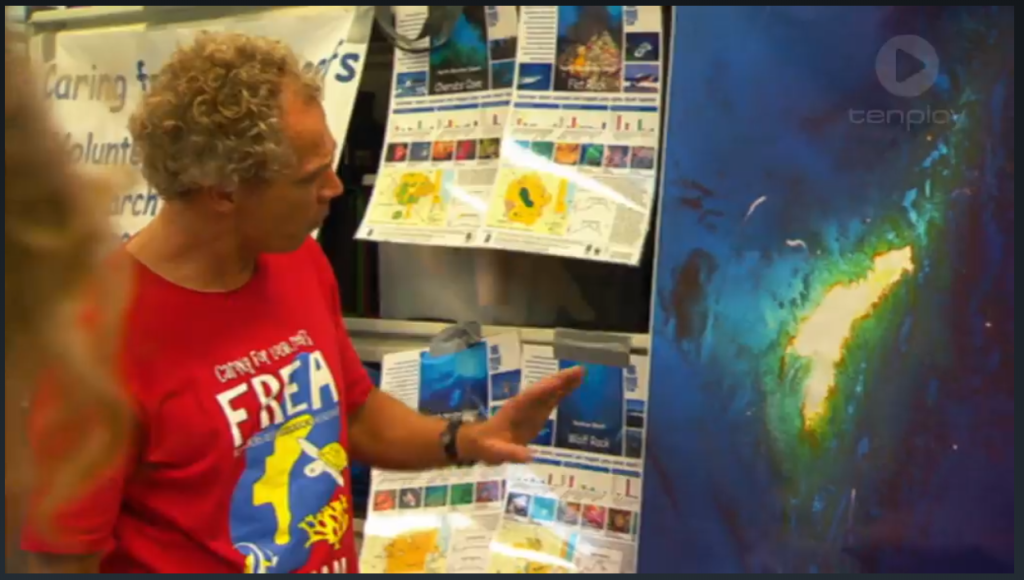
View video
Search for Super Corals
GBR LEGACY: The secret to saving the Great Barrier Reef has been unlocked.
The Great Barrier Reef Legacy has discovered ‘Super Corals’ that could be the answer to repopulating our greatest natural wonder.

View video
New Coral Species Found on the GBR
7th December 2017 2018
ABC News
“A scientific team scouring the Great Barrier Reef for so-called super corals is claiming the discovery of a new species that appears to have survived devastating mass bleaching events.
It is thought to be the first new coral species found in more than three decades.
The non-profit scientific research organisation Great Barrier Reef Legacy took 10 top marine researchers on a 20-day expedition to the far northern reaches of the reef.
The ABC was the only media organisation on board.
Great Barrier Reef Legacy’s director John Rumney said the trip’s main objective was to search for super corals that managed to survive bleaching.
“In the process we found an incredible reef with new species of coral — that’s great, just fantastic,” he said.
The team counted up to 181 species of living coral at the site, the exact location of which is being kept secret for conservation reasons.
Among those on board was Charlie Veron, known as the Godfather of Coral, who’s responsible for discovering 20 per cent of the world’s coral species.
“We’ve found corals that have never been recorded on the Great Barrier Reef and then we found at least one really outstanding new species,” Dr Veron said….”
Read more
Underwater Mapping and CoralWatch
ABC News
“An unprecedented voyage is underway to find ways to protect the Great Barrier Reef. Two summers of high water temperature have proven toxic for the reef, causing mass coral bleaching.
A group called Great Barrier Reef Legacy has gathered teams of researchers and reef experts from Australia and around the world, and are conducting the biggest underwater mapping and sampling expedition since the bleaching occurred.
They are also searching for so-called “super corals” that survived the bleaching.
The director of GBR Legacy and veteran tour operator John Rumney said the time had come to do something about the death of coral across large parts of the reef.
“I’ve been out here for 40 years and observed the changes in the reef,” he said.
“When I first got here it was absolutely mind-blowingly beautiful and diverse, and over time we’ve seen it decline.
“We really need to start taking care of this, we’re beyond the point of it taking care of itself.”….”
Read more
Ocean Mapping Expedition - Episode 3 English
Youtube
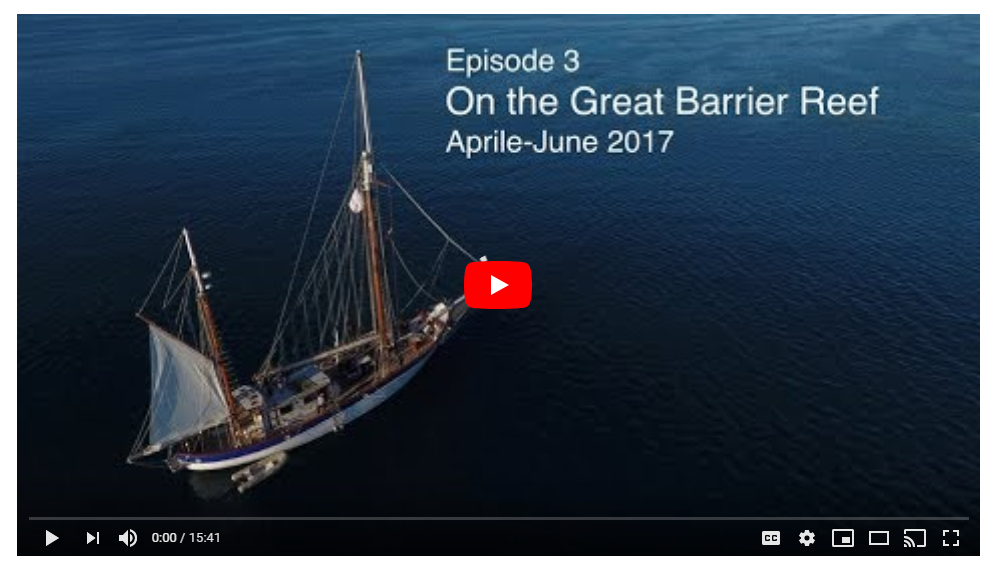
View video
Journey to the Underwater Sanctuary
Believe.Earth
“Corals are living thermometers, measuring the health of the sea. If the water temperature rises above 28 degrees Celsius (82.4oF) or is cloudy, the corals start to lose microalgae that live symbiotically in their bodies. Even after the excessive heat dispels or the water returns to crystal clarity, coral takes from three to four weeks to recover. If, in the meantime, more adversity hits the seas, the sensitive colonies may turn white – a sign that they have lost their lives.
The death of coral is mainly caused by the warming of their surrounding waters and the turbidity produced by pollution and the greenhouse effect. “After the two major global coral bleaching events in 2016 and 2017, half the Great Barrier Reef in Australia has died,” says Monique Grol, one of the managers of Coral Watch, a global coral health assessment program. The Great Barrier Reef is the largest coral colony on the planet and has been recognized by the United Nations Educational, Scientific and Cultural Organization (UNESCO) as a patrimony of humanity.
Conceived by marine biologist Justin Marshall, Coral Watch is a nonprofit project working in 80 countries to map and protect coral, and educate thousands of people about the importance of fighting to preserve our ecosystems. Based at the University of Queensland in the city of Brisbane, the initiative monitors more than 1,500 reefs, 57 percent of them located in Australia. “If we do not start acting immediately, we will not have reefs to show our children,” says Marshall, an optimist about the power of collective engagement in building a better future….”.
Read more
More CoralWatch Ambassadors to keep watch over the reef
Qld Government
“Citizen science group CoralWatch will create two more positions to keep watch over the Great Barrier Reef, thanks to funding from the Palaszczuk Government.
Environment Minister Steven Miles said the non-profit organisation would receive $329,000 over the next three years to boost its ambassador and community education programs.
“The Great Barrier Reef is incredibly precious to all Australians, and provides habitat for some of the world’s most magnificent marine animals,” Mr Miles said.
“This iconic asset is valued at $56 billion and supports 64,000 direct and indirect jobs.
“It’s organisations like CoralWatch that are helping us monitor the health of the Reef, and take the sustainable living message to the wider community.
“Funding from the Government’s $12 million Community Sustainability Action Grants program will help CoralWatch expand its Ambassadors program.
“These are the people who carry out community education work, data collection and citizen science programs.
“Their work also includes distributing Coral Health Charts, delivering remote learning programs in partnership with school events, and live-streaming events.”
The Coral Health Chart was developed by scientists at the University of Queensland in 2002.
“The chart uses a series of colours to determine the health of the Reef and is simple to use,” Mr Miles said.
“The chart is held up next to the coral and a note is made of the colour. The colour gives clues as to the health of that particular reef.
“The data collected can be provided to CoralWatch through its website, and used to monitor the health of Queensland reef.
“This is citizen science at its best, and it is really key in helping to map the health of the Great Barrier Reef.”….”
Read more
Citizen Scientists Nurture the Moreton Bay Hope Spot
Mission Blue
“The power of the people that helped to secure Hope Spot designation for Moreton Bay Marine Park in 2016 continues to build on that strong stewardship legacy. In 2017, citizen scientists have been collecting important information on the habitats and wildlife across beautiful Moreton Bay/Quandamooka including topics from mangroves to manta rays. These efforts complement the knowledge and care provided for tens of thousands of years by the traditional owners of the region, and is increasingly important with the rapidly growing population in this unique region.
“Citizen scientists provide not only data, but hope. The commitment to collecting high-quality information to help care for this unique place and its wildlife demonstrates how the community can play a truly important and influential role in science-based stewardship,” said Jennifer Loder, Reef Check Australia.
In the brink of severe coral bleaching impacting the Great Barrier Reef Hope Spot, CoralWatch (www.coralwatch.org) surveys of 460 corals in Moreton Bay showed no extreme increase of coral bleaching in this region. To enhance community awareness, the team also organised educational and awareness events with primary teachers and the public. Next to that team trained six CoralWatch Ambassadors in Brisbane, in how to organise events and reach-out to the community and make them aware about the reef and how they can help….”
Read more
Ocean Mapping Expedition - Episode 3 French
Youtube

View video
Tourism industry funds research trip to most damaged part of the GBR
The Guardian
“A scientific research expedition funded by the tourism industry will undertake the first significant underwater study of remote northern sections of the Great Barrier Reef, which were severely damaged by recent coral bleaching.
Nonprofit organisation Great Barrier Reef Legacy will launch a 21-day research trip on a 32-metre charter boat, offering at least 10 free spaces to scientists, including Charlie Veron, known as “the godfather of coral”.
As part of the expedition, Veron and other researchers will search for “super corals” – species that are most able to cope with rising temperatures.
“If you identify species of corals that appear to be resistant to bleaching – then the question is why. If you can find that out … it’s a step towards a cure or a way forward,” Veron told the Guardian.
Veron, a former chief scientist at the Australian Institute of Marine Science who is credited with discovering 20% of the world’s coral species, said having access to a vessel was invaluable, especially for researchers like him who are not currently affiliated with a university or government agency……”
Read more
Camden Haven High Schools marine studies students head to Lady Elliot Island
Camden Haven Courier
“Nine senior marine studies students from Camden Haven High School recently visited the beautiful Lady Elliot Island, Great Barrier Reef with their teachers Deb Geronimi and Ben Sainsbury and community member, Tom Ferrier from Camden Haven Community College.
The trip was made possible by a NSW Transport Grant received by Camden Head Pilot Station Manager Ross Butlin and Camden Haven Community College.
Without the funding for the transport it would have been extremely difficult for the students to raise the funds to go. The students and their teachers are extremely grateful.
The group left the school on May 27 and following an overnight stay at Hervey Bay took a 13-seater plane to Lady Elliot Island the following day. Four of the students had never flown before and the flight alone was an amazing experience.
On the approach to the island, giant manta Rays were spotted in the sparkling turquoise blue water below. It was not long before the students were on a glass bottom boat and snorkelling with the manta rays.
The wildlife was amazing and every morning the students were up at sunrise to have a snorkel at Lighthouse Bommie before breakfast. Manta Rays were abundant at this time of day and were observed at cleaning stations along the reef….
Read more
Young scientists to Indonesia and Collect CoralWatch Data
Townsville Bulletin
Coral reefs in the Anthropocene
Nature
“Coral reefs support immense biodiversity and provide important ecosystem services to many millions of people. Yet reefs are degrading rapidly in response to numerous anthropogenic drivers. In the coming centuries, reefs will run the gauntlet of climate change, and rising temperatures will transform them into new configurations, unlike anything observed previously by humans. Returning reefs to past configurations is no longer an option. Instead, the global challenge is to steer reefs through the Anthropocene era in a way that maintains their biological functions. Successful navigation of this transition will require radical changes in the science, management and governance of coral reefs….”
Read more
Dive deep, Learn More
Morning Bulletin Rockhampton
Feeling Helpless About the Great Barrier Reef? Here’s One Way You Can Help
The Conversation
“It is easy to feel overwhelmed when confronted with reports of the second mass bleaching event on the Great Barrier Reef in as many years. But there is a way to help scientists monitor the reef’s condition.
CoralWatch is a citizen science program started at The University of Queensland 15 years ago, with two main aims: to monitor the environment on a vast scale, and to help people get informed about marine science.
These goals come together with coral health monitoring. Divers, snorkellers or people walking around reef areas during low tides can send us crucial information about coral bleaching, helping us to build detailed pictures of the health of different reefs.
Participants can use a colour chart, backed up through the CoralWatch app or website, to measure accurately the colour and type of coral they see. The chart covers 75% of known corals and can be used with no prior training.
We also ask people to enter the type of coral (branching, boulder, plate or soft), the location and the weather. This allows scientists to quickly identify the location and extent of any problems (and is an excellent way to learn more about our reefs)…..”
Read more
Ocean Mapping Harnesses Citizen Science
Ocean Magazine
“The Ocean Mapping Expedition is a four-year journey around the world (2015-2019) in the wake of the discoverer of the Pacific, Ferdinand Magellan and will be an exceptional, one-of-a-kind opportunity to observe and map the state of the oceans today, echoing the spirit in which the Portuguese navigator and his crew embarked on their adventure almost 500 years ago.
A package of scientific, socio-educational and cultural programs will be undertaken in a multidisciplinary spirit of encounters and experience-sharing in order to gauge humanity’s impact on the oceans and contribute to the discussion of man’s place on “planet ocean”.
The Swiss expedition will depart Brisbane at the end of March 2017 to begin the second half of its journey around the world in Magellan’s wake.
Two new scientific programs will be deployed for the mapping and observation of the Great Barrier Reef, in partnership with the University of Queensland and the Australian NGO Coralwatch.
Working from Fleur de Passion, the aim will be to better understand the state of this UNESCO World Heritage site, which is witnessing serious deterioration owing to global warming, and to help develop tools for monitoring its evolution, with a view to its conservation…….”
Read more
UQ Researchers to Set Sail with Global Ocean Mapping Program
UQ News
“A Swiss yacht on an epic research expedition to map the world’s oceans will host University of Queensland marine scientists on the Great Barrier Reef in March and April.
UQ’s Professor Justin Marshall and Dr Chris Roelfsema will lead two research projects as part of the 33m Fleur de Passion’s four-year-long Ocean Mapping Expedition.
Dr Roelfsema, of UQ’s Remote Sensing Research Centre, is leading a program to map the habitat of the Great Barrier Reef, focusing on the 200 shallow reefs in the waters around Cairns to Cooktown.
Twenty of these reefs will be surveyed from the Fleur de Passion.
“No comprehensive map of the composition of all the diverse habitats on the whole Great Barrier Reef currently exists,” Dr Roelfsema said.
“These maps will provide valuable information for monitoring and management to support current bleaching surveys, the crown of thorn star fish eradication program, marine park zone design, and day-to-day management of the Great Barrier Reef…..”
Read more
The underwater citizen science club
Position No.87
Images of New Bleaching on Great Barrier Reef Heighten Fears of Coral Death
The Guardian
“The embattled Great Barrier Reef could face yet more severe coral bleaching in the coming month, with areas badly hit by last year’s event at risk of death.
. Images taken by local divers last week and shared exclusively with the Guardian by the Australian Marine Conservation Society show newly bleached corals discovered near Palm Island.
. Most of the Great Barrier Reef has been placed on red alert for coral bleaching for the coming month by the US National Oceanic and Atmospheric Administration (NOAA). Its satellite thermal maps have projected unusually warm waters off eastern Australia after an extreme heatwave just over a week ago saw land temperatures reach above 47C in parts of the country.
. According to the Great Barrier Reef Marine Park Authority, sea surface temperatures from Cape Tribulation to Townsville have been up to 2C higher than normal for the time of year for more than a month……”
CoralWatch Eco Internship Koh Tao
Eco Koh Tao
“CoralWatch is a non-profit organization, built on a research project at the University of Queensland in Brisbane, Australia. It is their aim to provide hands-on monitoring and education tools to increase awareness of reef threats and encourage behaviour change towards a sustainable, low-carbon future.
Their main research tool is the Coral Health Chart. This Chart is basically a series of sample colours, with variation in brightness representing different stages of bleaching/recovery, based on controlled experiments. It is an inexpensive, simple, non-invasive method for the monitoring of coral bleaching and assessment of coral health. In the field, users simply compare colours of corals with colours on the chart and record matching codes. With the help of the Health Charts, anyone in the world can monitor the health of any reef across the globe.
CoralWatch database provides up-to-date data on reef conditions worldwide. They continually need more data to measure trends and improve their understanding and capacity to conserve reefs. They collaborate with Project AWARE Foundation, a non-profit environmental organisation working with divers to conserve underwater environments through education, advocacy and action. Project AWARE have registered over 1,000 CoralWatch operators worldwide, making it easy for divers and snorkelers to get involved…….”
Read more
2016
Citizen data monitors coral bleaching
Science Meets Business + Australian National Data website
“CoralWatch is a citizen data (‘citizen science’) initiative to monitor coral health worldwide. It is the first attempt at providing useful data on coral reef health at large scale with non-invasive tools. Scientists, school groups, dive centres and tourists can measure coral bleaching using the Coral Health Chart – a simple plastic square – and add their data to the CoralWatch database.
Coral bleaching occurs when increased water temperatures causes coral to expel their symbiotic algae that help absorb nutrients and provide corals vibrant colour. Rising sea temperatures due to climate change have caused unprecedented levels of coral bleaching….”
Read more – Science Meets Business
Read more – Australian National Data website

